Lesser Black-backed Gull
Larus fuscus (Linnaeus, 1758)
LB
 LBBGU
LBBGU  5910
5910

Family: Charadriiformes > Laridae
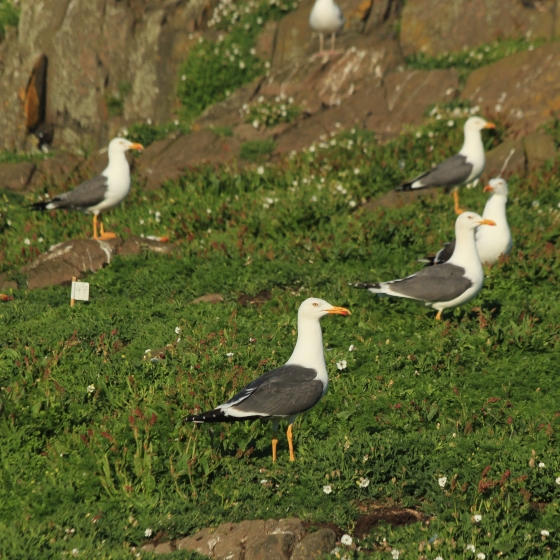
The Lesser Black-backed Gull, with its dark grey back and yellow legs, is as much at home in our towns and cities as it is along our wilder coast.
During the summer months the Lesser Black-backed Gull breeds in colonies on windswept, low-lying coastal islands but it also breeds on the flat roofs of city-centre buildings and industrial units.
Part of our breeding population heads south during the autumn to winter around the coasts of southern Spain, Portugal and north and west Africa. BTO research has demonstrated that the artificial reefs of offshore wind farms may have a positive effect on Lesser Black-backed Gull, providing them with new feeding opportunities.
Identification
Lesser Black-backed Gull identification is sometimes difficult. The following article may help when identifying Lesser Black-backed Gull.
Identifying adult black-backed gulls
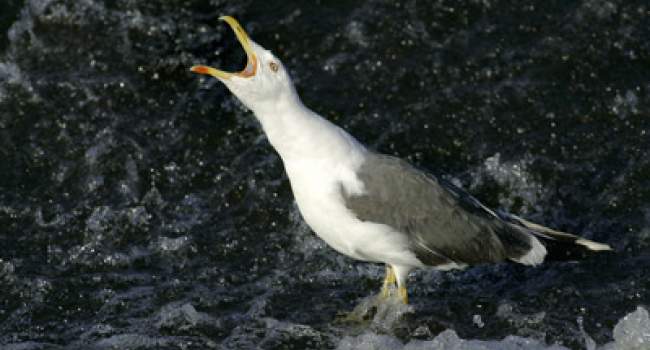
On paper Lesser and Great Black-backed Gulls are straightforward to separate but, in reality, many of us struggle - especially as the light conditions can alter their colour and size is not always apparent. Watch our video to tell these two species apart, as well as differentiate them from Herring Gull.
SONGS AND CALLS
Listen to example recordings of the main vocalisations of Lesser Black-backed Gull, provided by xeno-canto contributors.
Call
Song
Develop your bird ID skills with our training courses
Our interactive online courses are a great way to develop your bird identification skills, whether you're new to the hobby or a competent birder looking to hone your abilities.
Browse training coursesStatus and Trends
Population size and trends and patterns of distribution based on BTO surveys and atlases with data collected by BTO volunteers.
CONSERVATION STATUS
This species can be found on the following statutory and conservation listings and schedules.
POPULATION CHANGE
The population of Lesser black-backed Gulls increased considerably between the 1969–70 Census and Seabird 2000 (1998–2002) with the number of coastal nesting pairs almost doubling (JNCC 2022). The full extent of this increase is unclear as inland nesting birds were not counted consistently prior to Seabird 2000, but Atlas data show that significant range increases in inland areas have occurred, suggesting that population increases have also occurred across inland colonies which are usually on rooftops. However, annual monitoring shows that substantial declines have occurred at coastal colonies since Seabird 2000 and, although increases appear to have continued at inland colonies, it is unclear how far these go towards compensating for the declines in coastal areas. The results from the Seabirds Count (2015–2021) are expected to help clarify the recent trend, although they are likely to remain subject to some uncertainty due to the difficulty in accurately counting gulls nesting on rooftops.
| UK breeding population |
No population change in UK (1995–2022) 
|
DISTRIBUTION
As a breeding species, Lesser Black-backed Gulls are mostly coastal but an increasing tendency to nest on rooftops is allowing them to spread inland. In winter they can be found around the coast of Britain and Ireland, in the southeast interior of Ireland and throughout the lowlands of Britain.
Occupied 10-km squares in UK
| No. occupied in breeding season | 1016 |
| % occupied in breeding season | 34 |
| No. occupied in winter | 1894 |
| % occupied in winter | 63 |
European Distribution Map
European Breeding Bird Atlas 2
Breeding Season Habitats
| Most frequent in |
Estuaries, Open Shore 
|
Relative frequency by habitat
Relative occurrence in different habitat types during the breeding season.

DISTRIBUTION CHANGE
Since the 1980s there has been a major winter range expansion and population increase, with gains particularly notable in Ireland, where there has been a 55% expansion in range, and in Wales, southwest England and East Anglia as well as in Scotland.
Change in occupied 10-km squares in the UK
| % change in range in breeding season (1968–72 to 2008–11) | +61.8% |
| % change in range in winter (1981–84 to 2007–11) | +21.6% |
SEASONALITY
Lesser Black-backed Gulls are recorded throughout the year, though more often in the breeding season.

Movement
Information about movement and migration based on online bird portals (e.g. BirdTrack), Ringing schemes and tracking studies.
RINGING RECOVERIES
View a summary of recoveries in the Online Ringing Report.
Foreign locations of birds ringed or recovered in Britain & Ireland

Biology
Lifecycle and body size information about Lesser Black-backed Gull, including statistics on nesting, eggs and lifespan based on BTO ringing and nest recording data.
SURVIVAL & LONGEVITY
View number ringed each year in the Online Ringing Report
Maximum Age from Ringing 
|
34 years 10 months 27 days (set in 2000) 
|
Typical Lifespan 
|
15 years with breeding typically at 4 year |
Adult Survival 
|
0.913±0.012 (Male: 0.918±0.016 Female: 0.907±0.018)  
|
BIOMETRICS
Wing Length 
|
Adults | 410.9±16.2 | Range 384–438mm, N=149 |
| Juveniles | 408.9±21.3 | Range 365-440mm, N=48 |
Body Weight 
|
Adults | 831±103.8 | Range 686–999g, N=100 |
| Juveniles | 785±118.2 | Range 630–1000g, N=54 |
Feather measurements and photos on featherbase 
CODES & CLASSIFICATION
Ring size 
|
G |
Field Codes 
|
2-letter: LB | 5-letter code: LBBGU | Euring: 5910 |
For information in another language (where available) click on a linked name
Research
Interpretation and scientific publications about Lesser Black-backed Gull from BTO scientists.
CAUSES AND SOLUTIONS
Causes of change
The main drivers of the population changes were reviewed by Ross-Smith et al. (2014). They suggest that the growth population growth in the second half of the twentieth century was caused by several factors including better legal protection and their ability to adapt to new feeding opportunties (fisheries discards and anthropogenic sources of food) and to make use of urban sites which are largely predator free. Recent declines particularly at rural and coastal colonies are associated with reduced breeding success resulting from reduced feeding opportunties due to closure of landfill sites and a reduction in fisheries discards.
PUBLICATIONS (12)
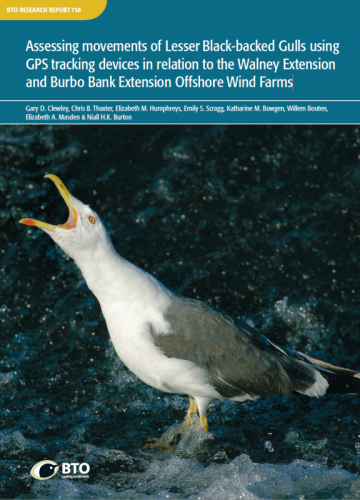
Assessing movements of Lesser Black-backed Gulls using GPS tracking devices in relation to the Walney Extension and Burbo Bank Extension Offshore Wind Farms
Offshore wind farm developments form a major part of the UK government’s commitment to obtain 15% of the UK’s energy needs from renewable sources by 2020. However, there is concern over the potential detrimental effects that offshore developments may have on bird populations.
Assessing the habitat use of Lesser Black-backed Gulls (Larus fuscus) from the Bowland Fells SPA - ANNEX 1 - 2017 update
This annex to BTO Research Report 694 (Clewley et al.
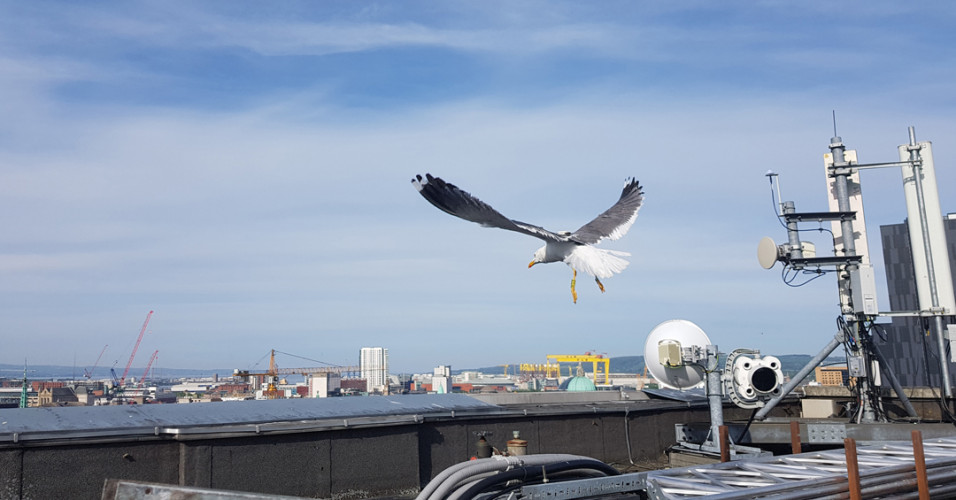
Belfast’s urban gulls: an assessment of breeding populations, breeding season movements and winter population
Contrasting effects of GPS device and harness attachment on adult survival of Lesser Black-backed Gulls Larus fuscus and Great Skuas Stercorarius skua
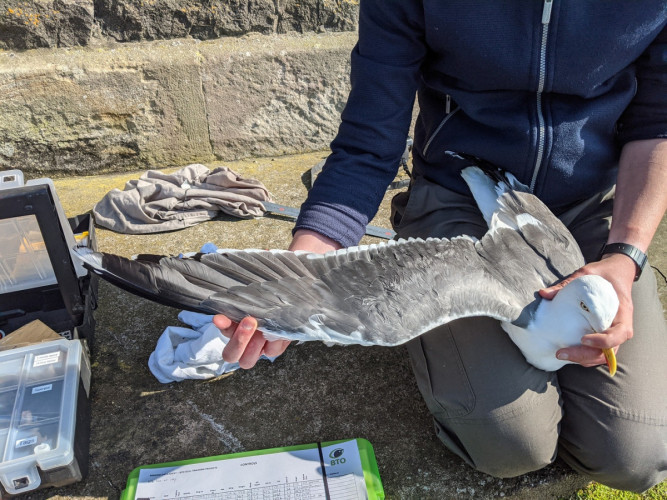
Daily, seasonal and annual variation in area use of Lesser Black-backed Gulls (Larus fuscus) related to offshore renewable developments
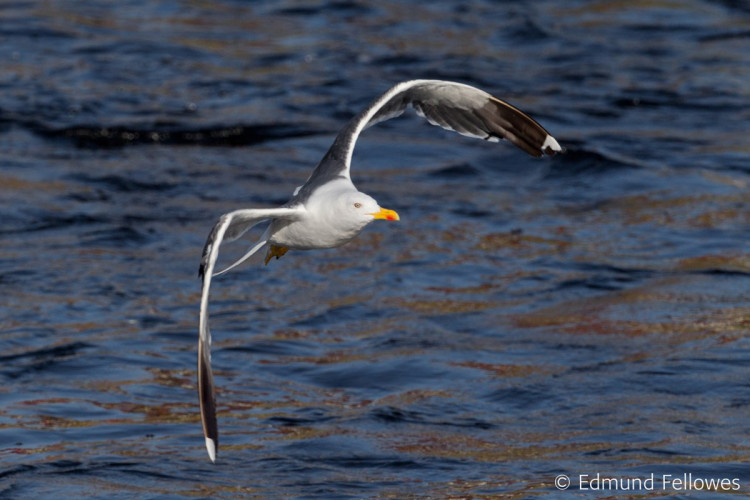
Dodging the blades: new insights into three-dimensional space use of offshore wind farms by lesser black-backed gulls Larus fuscus
Dodging the blades: gulls and wind farms
Initial findings suggest that Lesser Black-backed Gulls in north-west England fly within wind farms, but may avoid wind turbines once there.
Links to more studies from ConservationEvidence.com
- A control taste aversion experiment on predators of roseate tern (Sterna dougallii) eggs
- Effectiveness of disturbance methods and egg removal to deter large gulls Larus spp. from competing with nesting terns Sterna spp. on Coquet Island RSPB reserve, Northumberland, England
- Methods used to improve least tern and snowy plover nesting success on alkaline flats
Read more studies about Lesser Black-backed Gull on Conservation Evidence >
Would you like to search for another species?














Share this page